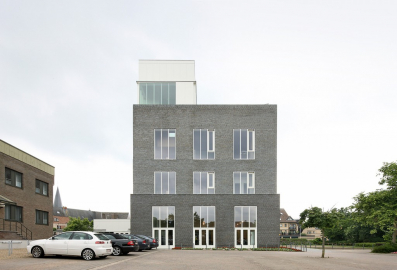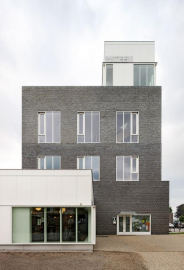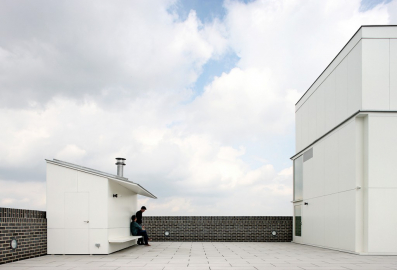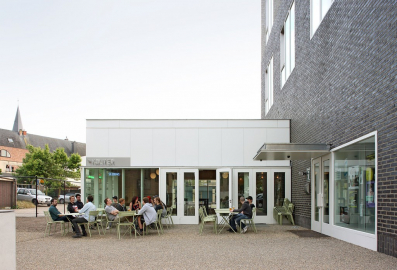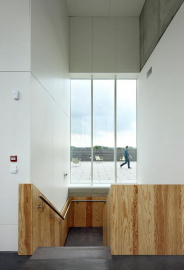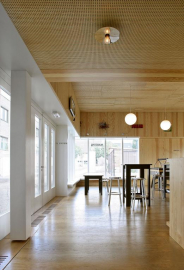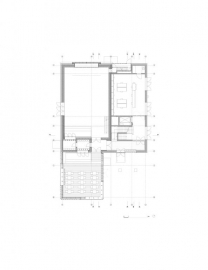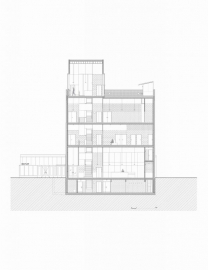Community Centre De Steen
The multifunctional community centre acts as a campanile for the town hall of the municipality of Bocholt. Its dark brown over-scaled volume peeks out over the surrounding buildings, this way marking the townscape. The white volumes distort the main setup, as unplanned extensions in a typical Flemish landscape.
In the rural municipality of Bocholt the new multifunctional building De Steen combines several functions previously scattered over the centre: youth café, multipurpose hall, academy of arts, repetition space, leisure and tourism department. This project was used to revalue the neighboring town hall and its surrounding public domain. In all modesty and on a small scale, the design addresses the relation between architecture and urban design, between built volume and open space. It subtly appears above and in between the surrounding constructions and functions as a signal visible from various locations around the town.
The building is conceived as a compact and monolith volume in a shimmering dark brown brick. Four levels are stacked, each with a different height depending on the function it houses, and made visible in the facades by small volumetric shifts in the masonry. The white secondary volumes and window frames accentuate this stately appearance. The roof volume gives access to the rooftop terrace and playground, which offers panoramic views towards the town and its surroundings. The main volume refers to the unusual typologies of some remarkable buildings located in the town center: the brewery, the Biotechnicum and the old dairy. The particular dark brown brickwork used in these buildings shows as a notable element of the area. The new building endorses this tradition and at the same time counters it using a slightly enamelled and large format version of the brown brick. The uniform use of brickwork for the main volume stresses the monolith character and robustness of the building. By differing texture, depth and width of the joints, the visual stacking of the levels and functions in the facades is strengthened. It helps bringing the building down to the scale of the village, the surrounding buildings and the users. Through aging the differences between the joints will increase and the expression of the stacked arcades will become more distinct.
Inside, the materials derive from the constructive build-up. In the circulation spaces the structural elements remain visible: white painted concrete masonry, dark brown polished concrete floor, stairs in brown pigmented concrete and concrete ceilings. The (class-) rooms have a warm and intimate atmosphere created by the wooden walls and curtains which contribute to the ideal absorption of sound necessary for a music academy.
The compact volume forms the basis of an optimal energetic performance. The central location made possible by very good acoustic insulation contributes to the lively town centre: it literally helps building a community. Short term flexibility: range of rooms with different sizes and uses; long term flexibility: light intermediate walls allow reorganization.
Building 1275 m²
Site design and exact boundaries in development

